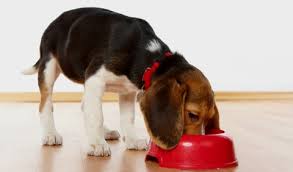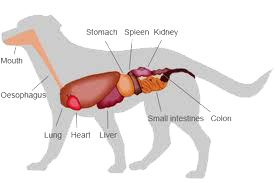
The dog can draw on different food sources to meet his needs.
From food and water it draws all the substances necessary for its metabolism and for its daily vital functions: this happens through digestion.
It consists of a set of small chemical and mechanical actions. Under neuro-hormonal control. Which have the purpose of making food assimilable, breaking them down into parts small enough to be used.
It is the digestive tract that transforms complex substances into productive elements such as lipids, proteins, vitamins and minerals. Ingestion belongs to the tongue, teeth and salivary glands, pharynx and esophagus.

Swallowing is rapid, few dogs do not chew much and through the esophagus food mixes with gastric juices, composed of hydrochloric acid and enzymes.
A significant part of digestion takes place in the dog's stomach which produces high amounts of hydrochloric acid .
The food, from a food bolus, turns into a kind of mush called chyme that is pushed into the intestine where it undergoes the rest of the chemical digestion thanks to secretions from the pancreas and liver.
In the large intestine, consisting of the cecum, colon and rectum, the last nutrients and water are absorbed. The bacterial flora contained in the intestine breaks down the proteins and carbohydrates not yet digested and assimilated.
Time to digestion

Cecum and colon are also active in the process of formation, storage and evacuation of feces that accumulate in the rectum to stimulate the urge to defecate.
The dog's digestive process is very long, longer than eight hours : this is why it is important to administer only two meals, morning and evening.